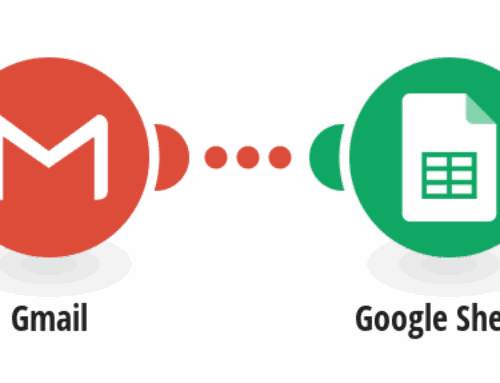The Ultimate Guide to Mastering SEO in 2023
Understanding the Basics of SEO
What is SEO?
SEO, or Search Engine Optimization, is like the magic wand that makes your website more visible to people searching for related topics online. Imagine having a store in a crowded mall; SEO is the flashy sign that draws people in. It involves various strategies and techniques designed to improve your site’s ranking on search engines like Google. Without it, your amazing content might get lost in the vast ocean of the internet.
Grasping the essence of SEO starts with understanding how search engines operate. They use complex algorithms to analyze and rank sites based on relevance, quality, and user experience. By aligning your content with these invisible rules, you can climb the search result ladders and increase traffic. But it’s not just about getting eyes on your site; it’s also about offering value so that visitors keep coming back.
The Importance of SEO for Your Business
Imagine you’ve set up a beautiful store but can’t find any customers. That’s what happens to websites without SEO. It is crucial for businesses because it enhances visibility and attracts potential clients. In today’s digital age, almost every consumer turns to search engines for answers. If your company isn’t appearing in those searches, you’re missing out on a huge chunk of potential revenue.
Beyond visibility, SEO builds credibility and trust with your audience. When your site appears on the first page of search results, users perceive it as more reliable and authoritative. A well-optimized site also improves user experience, making it easier for visitors to navigate, find information, and make purchases. This combination of factors makes SEO an invaluable asset for sustainable growth.
Diving into On-Page SEO Techniques
Crafting High-Quality Content
High-quality content is the cornerstone of on-page SEO. Think of it as the foundation of a house; without a solid base, everything else collapses. To engage visitors and boost rankings, your content needs to be original, informative, and relevant to your target audience. It should answer the questions they’re asking and solve their problems efficiently.
Incorporating keywords naturally within your content is equally important. Keywords are like the GPS coordinates leading users to your site. However, avoid keyword stuffing, which can lead to penalties. Instead, focus on creating comprehensive guides that delve deep into a subject, offering readers real insights and practical solutions.
Optimizing Meta Tags and Headers
Meta tags and headers are akin to a book’s title and chapter names—they guide both users and search engines through your content. The title tag should encapsulate the main theme of the page, ideally including primary keywords. This not only aids SEO but also boosts click-through rates by promising valuable information.
Headers (H1, H2, H3) organize your content into digestible sections. They provide structure and help search engines understand the hierarchy and importance of information on your page. When crafting headers, ensure they are descriptive and keyword-rich, setting clear expectations for the reader and enhancing your site’s crawlability.
Mastering Off-Page SEO Strategies
Building Backlinks for Authority
Backlinks are the currency of authority in the digital world. They are like endorsements from other websites vouching for your content’s value. The more quality backlinks you acquire, the more reputable your site becomes in the eyes of search engines. However, it’s quality over quantity—it’s better to have a handful of links from respected sources than hundreds from low-tier sites.
To build a strong backlink profile, engage in guest blogging, establish industry partnerships, and create shareable content. Infographics, studies, and expert roundups tend to attract attention and can be a great way to earn natural backlinks. Remember, backlinking is an ongoing process that requires patience and consistency.
Utilizing Social Media for SEO
Social media platforms are no longer just for selfies and updates; they play a crucial role in SEO strategy. When you share your content on social media, you amplify its reach and increase the likelihood of gaining backlinks. Additionally, social signals—likes, shares, comments—can indirectly boost your SEO efforts by driving traffic and engagement.
Having an active presence on social media helps you connect with your audience on a personal level. It allows you to build a community around your brand, encouraging loyalty and repeat visits. Plus, being active on platforms where your target audience hangs out enhances your brand visibility and reinforces your SEO campaigns.
Staying Ahead with Technical SEO
Improving Site Speed and Performance
Site speed is like the pit crew of a race car—essential for victory. A slow-loading website frustrates users and leads them to abandon your site, increasing bounce rates and negatively impacting SEO. Ensuring fast load times should be a priority, as search engines prioritize speedy sites in their rankings.
Optimizing images, leveraging browser caching, and minimizing server response times are effective ways to enhance site speed. Tools like Google PageSpeed Insights can help identify areas for improvement. Consistently monitoring performance keeps your site running smoothly and ensures visitors have a seamless experience.
Ensuring Mobile Friendliness
With more people accessing the web via mobile devices than desktops, mobile friendliness is non-negotiable. It’s like having a responsive service team ready any time, anywhere. A mobile-optimized site adjusts seamlessly to different screen sizes, providing users with a consistent experience across all devices.
Responsive design, fast loading times, and easy navigation are key elements of mobile optimization. Test your site using Google’s Mobile-Friendly Test tool to ensure it’s meeting modern standards. A mobile-friendly site not only improves user satisfaction but also enhances search rankings since search engines favor mobile-optimized pages.
Adapting to the Latest SEO Trends
Embracing Voice Search
Voice search is revolutionizing the way people find information online. It’s like having a conversation with your device. More users now rely on voice-activated assistants like Siri and Alexa to perform searches. This trend means businesses need to optimize for conversational queries, focusing more on natural language and question phrases.
Utilizing long-tail keywords and FAQs can help cater to this shift. Additionally, ensuring that your site’s content provides direct answers to common questions can capture voice search traffic. Embracing this trend is crucial for staying relevant and accessible to the growing number of voice search users.
Focusing on User Experience
User experience (UX) is the ultimate judge of your website’s success. If visitors find navigating your site cumbersome, they’re likely to leave disappointed. UX encompasses everything from design aesthetics to functionality, ensuring that users have a pleasant and intuitive experience.
Improving UX involves simplifying navigation, ensuring accessibility, and enhancing content readability. Tools such as heatmaps can provide insights into user behavior, helping you tweak your site for better engagement. Prioritizing UX not only satisfies visitors but also aligns with Google’s focus on rewarding user-friendly sites.
Tracking and Measuring SEO Success
Utilizing Analytics Tools
Analytics tools are the compass guiding your SEO journey. They provide valuable insights into what’s working and what needs adjustment. Platforms like Google Analytics and SEMrush offer data on traffic sources, user behavior, and site performance, helping you refine your strategies for optimal results.
Regularly reviewing analytics data allows you to track progress and identify trends. Whether it’s noticing a spike in traffic from a particular blog post or observing drop-offs at a specific page, analytics equip you with the knowledge needed to make informed decisions and enhance your SEO efforts.
Setting Realistic Goals and KPIs
Setting achievable goals and key performance indicators (KPIs) is crucial for measuring SEO success. It’s like setting a series of checkpoints on a long hiking trail. Goals should be specific, measurable, attainable, relevant, and time-bound (SMART). Whether it’s increasing organic traffic by 10% within three months or improving conversion rates, clear goals keep your efforts focused.
KPIs are the metrics that indicate progress towards these goals. By tracking KPIs such as organic search traffic, bounce rate, and conversion rates, you can evaluate how well your SEO strategies are performing. Regular assessments ensure your SEO campaigns remain aligned with overarching business objectives.










